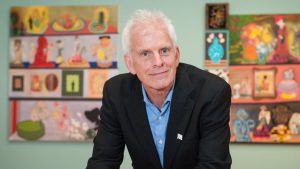Chicago public art gets boost from city program
By Kevin Beese Staff reporter — November 1, 2017
The city is looking to further its public art with Chicago’s first Public Art Plan. The plan gives recommendation aimed at helping shape the future of public art in the city and shifting how city leaders talk about and support public art.
The next time you are in a Chicago library or CTA station, take a look around. You might be in the presence of future artistic greatness.
The city is looking to further its public art with Chicago’s first Public Art Plan. The plan gives recommendation aimed at helping shape the future of public art in the city and shifting how city leaders talk about and support public art.
“The Chicago Public Art Plan is an innovative blueprint that builds on Chicago’s cultural legacy and will inspire ongoing support for public art in neighborhoods throughout the city,” Mayor Rahm Emanuel said. “We will continue to support the gifted artists, working across all mediums that add to the cultural fabric of the city and inspire the next generation of talent.”
The plan was developed with the city’s Department of Cultural Affairs and Special Events.
Goals of the Public Art Plan are:
- Update Chicago Percent for Art Program, which currently ensures that 1.33 percent of the budget for construction of public buildings or renovation of at least 50 percent of the space in a public building be used for public art.
- Establish clear and transparent governmental practices regarding public art.
- Expand resources to support the creation of public art throughout the city.
- Advance programs that support artists, neighborhoods and the public good.
- Strengthen the city’s public art collection management system.
- Support the work that artists and organizations do to create public art.
- Build awareness of and engagement with Chicago’s public art.
“The Chicago Public Art Plan aims to be visionary, yet grounded in practice,” said Mark Kelly, Department of Cultural Affairs and Special Events commissioner. “It speaks to how we value art and what it can mean for all Chicagoans.
“As Chicago powers forward as an engine of creative life, we ought not forget that public art isn’t just one discipline. It’s how we as a city bring artistic vision to our streets and to the public realm. By engaging in public art, we bring value, meaning and pride to Chicago.”
The plan notes that the process of commissioning public art must welcome creativity in all of its forms and offer broad opportunities for participation. It is seen as a way to advocate for a diverse public art ecosystem.
Emanuel said that public art emerged as a recurring theme in conversations surrounding the Chicago Cultural Plan 2012, which was presented as the city’s first plan for the arts since 1986. That plan proposed expanding art in public places as a core strategy in elevating and expanding neighborhood cultural assets and a sense of place. With those goals in mind, the Department of Cultural Affairs began to formally solicit input from artists, cultural leaders, neighborhood advocates and other citizens on the future of public art in Chicago.
The mayor directed the Department of Cultural Affairs to increase its emphasis on cooperation among city agencies and with community leaders in its planning for public art. Focus groups with the city and sister agencies addressed ways to increase collaboration. That collective input served as the basis for the Public Art Plan’s recommendations.
Officials said that the Chicago Public Art Plan weaves policy, history and images together to create the framework for recommendations. They say it celebrates Chicago as a home for public art while providing a path forward — establishing a shared vision for Chicago as a city where public art is valued and more essential than ever.
Emanuel has designated 2017 as “The Year of Public Art,” commemorating the 50th anniversary of two public artworks — the Picasso in Daley Plaza and the Wall of Respect, which once stood at 43rd Street and Langley Avenue on the city’s South Side (the building where the mural of black heroes was created was damaged by fire in 1971 and demolished.). He said the designation also highlights the role public art has played in the city’s history.
The city made a $4 million investment in public art this year, including creation of a public art youth corps, a public art festival and a 50×50 Neighborhood Arts Project, commissioning new public art in all of Chicago’s 50 wards.
Free subscription to Cook County Chronicle Digital Edition
Read the Cook County Chronicle digital edition
— Chicago public art gets boost from city program —-








